40 Facts You Learned in the 20th Century That Are Totally Bogus Today
These elementary school facts don't hold up in the 21st century.

The 20th century may not seem that long ago, but when you look at some lessons commonly taught in schools then—from science to technology to culture to history—you'll realize just how long ago it really was. That's why we've compiled some of the biggest whoppers that were considered "facts" then that have since been proven to be wrong.
So read on, and know that that our solar system isn't quite so big, our coffee isn't quite so dangerous, and Thomas Edison may get a lot more credit than he deserves. And for some amazing things we hope to learn in the future, check out the 30 Craziest Predictions About the Future Experts Say Are Going to Happen.
1
Pluto was a planet
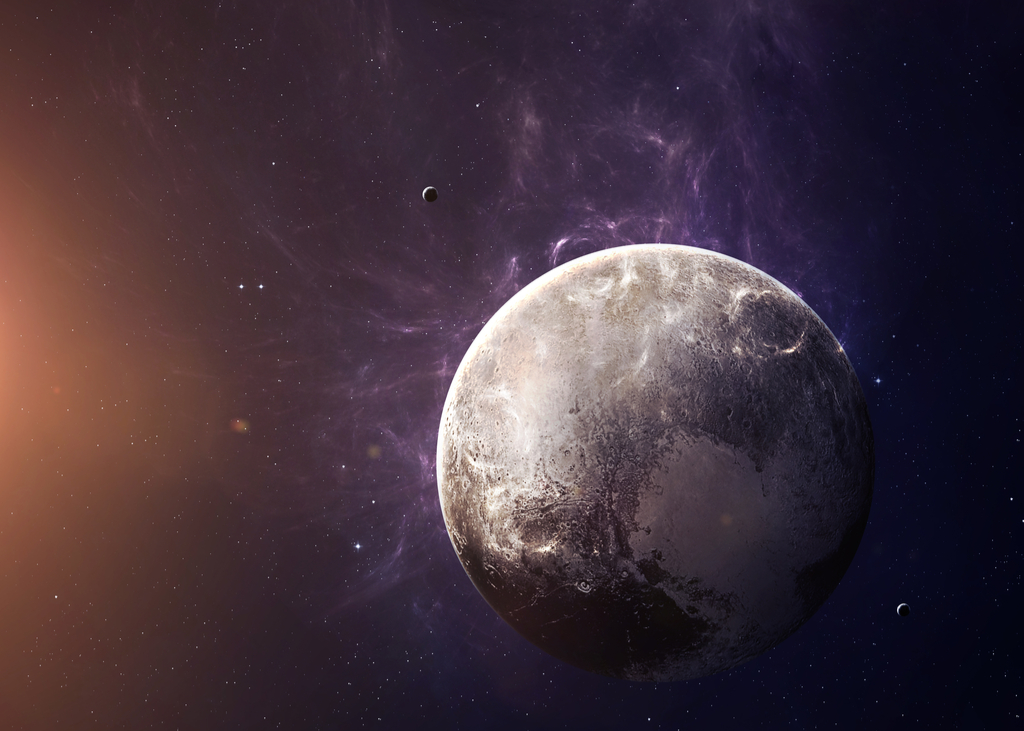
It seems like yesterday that we were walking around thinking Pluto was among the planets in our solar system. We had songs and rhymes to help us remember how far it was from the sun and how much smaller it was than the other planets. Then the International Astronomical Union came along in August 2006 and clarified that it was not a planet at all. Instead, it's a dwarf planet. We will miss you, Pluto! And for more knowledge for wowing your friends, here are 100 Awesome Facts About Everything.
2
There is Zero Gravity in Space
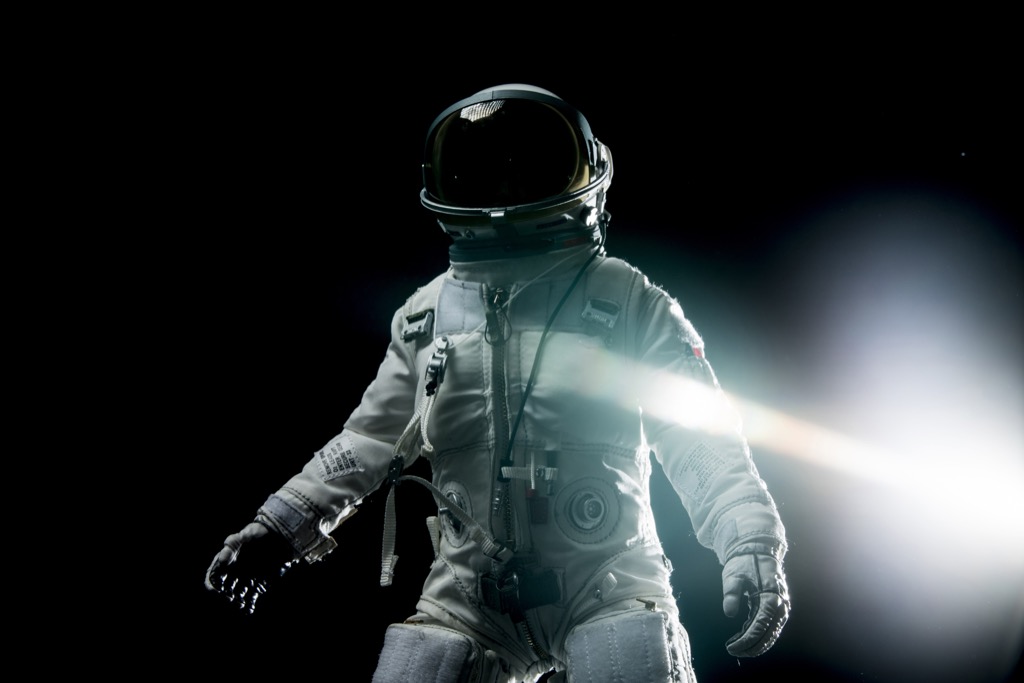
While the image of astronauts floating weightlessly has led to the perception that space is a place of zero gravity, in fact there is a lot of gravitational pull happening there. As Yale Scientific's Chidi Akusobi explains: "it is important to distinguish 'weightlessness' from 'zero-gravity.' Astronauts feel weightless because their shuttle is in a state of continuous free fall to the earth. However, the space shuttle never falls to the earth because it is traveling horizontally at about 18,000 km/hr, opposing the force of gravity. If the spacecraft was not moving quickly enough, it would fall prey to the effects of earth's gravitational field and fall to the earth." And for more fun trivia on things much closer to home, here are 20 Amazing Facts You Never Knew About Your Smartphone.
3
Sputnik caught the U.S. totally off-guard.

The popular narrative of the space race is that the Soviet launch of Sputnik caught the Eisenhower administration entirely off-guard and created a spell-binding shock that our Cold War enemies were further along in their space program. However, historians have recently pointed out that while lots of scientists were surprised, the administration was well aware of how far the Soviet program had progressed (thanks to U-2 spy plane photos). In fact, U.S. officials were slightly relieved, since the legality of space exploration was still up in the air at the time, so by going first, the USSR helped make it easier for the U.S. to follow suit.
4
The Planet Closest to the Sun is the Hottest

We used to believe that Mercury, the planet closest to the Sun, was the hottest. But researchers have found that the hottest planet is, in fact, Venus, which can reach temperatures of 863 degrees Fahrenheit (Mercury only gets to 800 degrees Fahrenheit). The reason is that Venus has a thicker atmosphere, trapping in the heat of the Sun. And for more great knowledge, here are 10 Amazing Facts That Will Make You Smarter.
5
You Can See the Great Wall of China from Space

This was a commonly held belief for years, based on nothing but anecdotes. As Alan Bean, Apollo 12 astronaut has clarified: "The only thing you can see from the Moon is a beautiful sphere, mostly white, some blue and patches of yellow, and every once in a while some green vegetation."
6
Fat is terrible

Health fads come and go, but a fear of fat plagued the U.S. for decades. Diet books and nutrition regiments urged us to cut out all the fat from what we were eating. But it turns out, not only was it virtually impossible to remove fat from the food we put into our bodies, it wasn't actually as good for us as we were told.
This myth took a big hit in 2006 with a study of almost 50,000 postmenopausal women that tracked incidents of heart disease, stroke, and cardiovascular disease. It turned out that whether someone at high-fat or low-fat diets had little effect on these health outcomes. Also, we've since learned that healthy fats are essential. For proof, see these 40 Foods to Eat After 40.
7
All high-fat foods raise cholesterol

This was a related and equally bogus believe that was held for a long time. The waxy cholesterol that inhabits the fat in our blood was believed to increase our risk of heart attacks and stroke—keeping us from enjoying eggs and other high-cholesterol foods. Turns out, cholesterol relates more to the types of fat we eat, with saturated and trans fats being the ones most likely to raise cholesterol levels.
8
All Carbs Are Created Equal

We swung from believing carbs were great for our energy and health, to the biggest enemy of keeping our weight down. It's become clear now that the truth is somewhere in the middle.
"The main reason [carbs get a bad rap] is that when people think 'carbs' they think 'starch', like white rice, pasta, potatoes or white bread," Susan Bowerman, director of Worldwide Nutrition Education and Training at Herbalife Nutrition, told NBC News. "While many refined carbs don't offer up much nutritionally, there are lots of 'good carbs' — healthy foods that provide carbohydrates your body absolutely needs every day to function properly." For the right carbs to eat, see the 10 Healthiest Carbs That Won't Derail Your Six-Pack.
9
Look for "Net Carbs" on the Nutrition Label

On a related note, looking at the "net carbs" of an item was often proposed as a solution to figuring out how good/bad that particular food product was. In fact, just understanding the total quantity of carbs tells us little about their quality.
"For example, I have patients who don't drink milk because of the carbohydrate content, but the carbohydrate in milk is not added, it's simply the natural sugar (lactose)," Bowerman also pointed out to NBC News. "But it's hard to tell from a label which carbs are natural and which are added, and unless you read the ingredients list as well, you won't know the source of the carbohydrate."
10
Coffee Stunts Your Growth
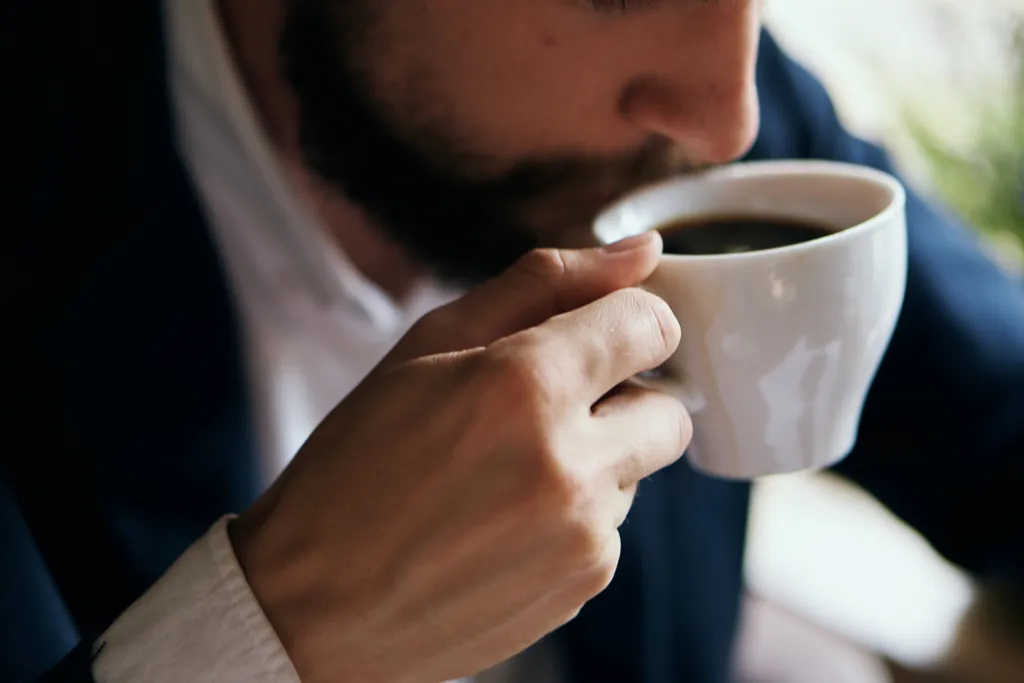
A common belief just a few years ago was that letting kids drink coffee would stunt their growth—a notion that was promoted at least as far back as the early 1900s by coffee alternative Postum. But these assertions have more recently been debunked. For example, one study of 81 adolescents over a six-year period found no correlation between daily ingestion of caffeine and bone growth or density. And yes, this false belief is one of the 20 Worst Food Myths That Still Persist.
11
All Sugar is Created Equal

In 1992, the United States Department of Agriculture introduced the "Food Guide Pyramid" laying out some simple rules about the proportion of fats, veggies, carbs, and sugars we should be eating. Turns out, it had some problems, and these started at the top, with the little triangle that urged keeping "sugar" as a very limited part of one's diet. This lumped all sugars in together, whether it came from gummy bears or apples and pears. In fact, not all sugar is bad for you, a fact we are finally learning to accept.
12
Fruit and Fruit Juice Are Equally Nutritious

Speaking of sugar and the Food Pyramid, it also spread the notion that "fruit" was a broad category of healthy food that included fruit juice. In fact, the processed, high-calorie fruit juices offer miniscule health benefits compared to raw fruit. The new approach to the Pyramid, known as MyPlate, takes these variations into account. And for more bogus health news, here are the 40 Health Myths You Hear Every Day.
13
Preparation does not nutrition

Let's just continue looking at the errors in the Food Pyramid's approach. It also presented foods as being equally nutritious, however they were prepared. But while chicken may offer valuable protein, there's a vast difference between a skinless chicken breast and a dozen buffalo wings. The government has since made preparation a key part of dietary recommendations, encouraging consumers to avoid frying foods. And for more mind-blowing trivia, check out the 20 Crazy Facts That Will Blow Your Mind.
14
Bread and Pasta Should Be the Bulk of Your Diet
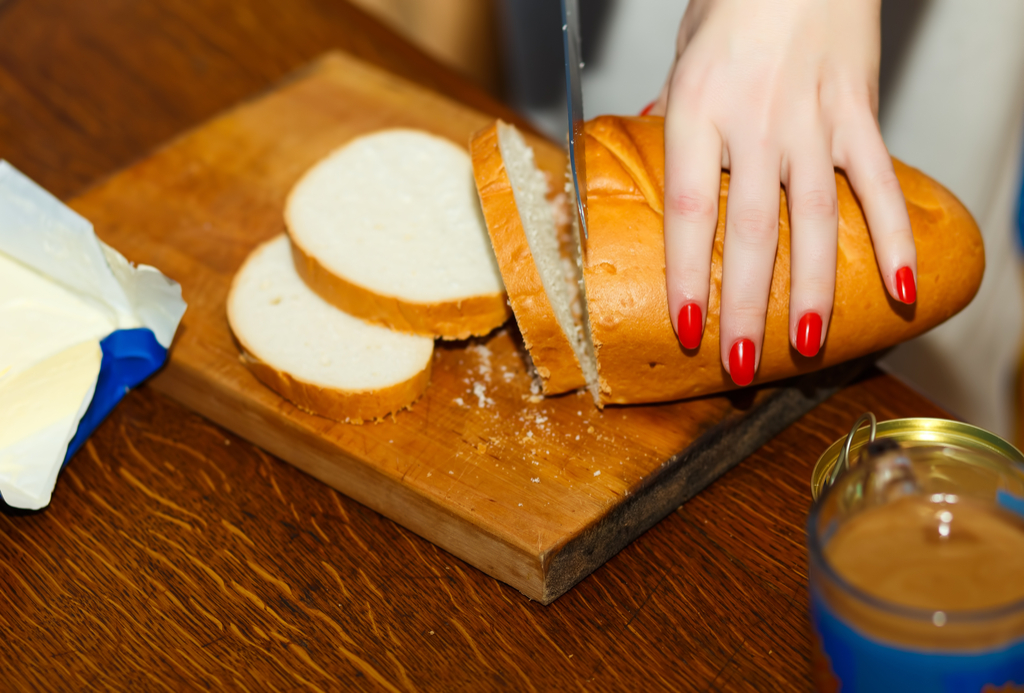
One more on the Food Pyramid. It also recommended that high-carb dishes like bread and pasta should serve as the foundation of a healthy diet. It not only recommended eating more bread than proteins and veggies, it didn't clarify which kinds of bread consumers should be eating—whole grain was as good as Wonder Bread in the Department of Agriculture's view. We've since wised up. And for more great health knowledge, check out the 30 Worst Women's Health Myths That Won't Die.
15
The Founding Fathers Were Christian
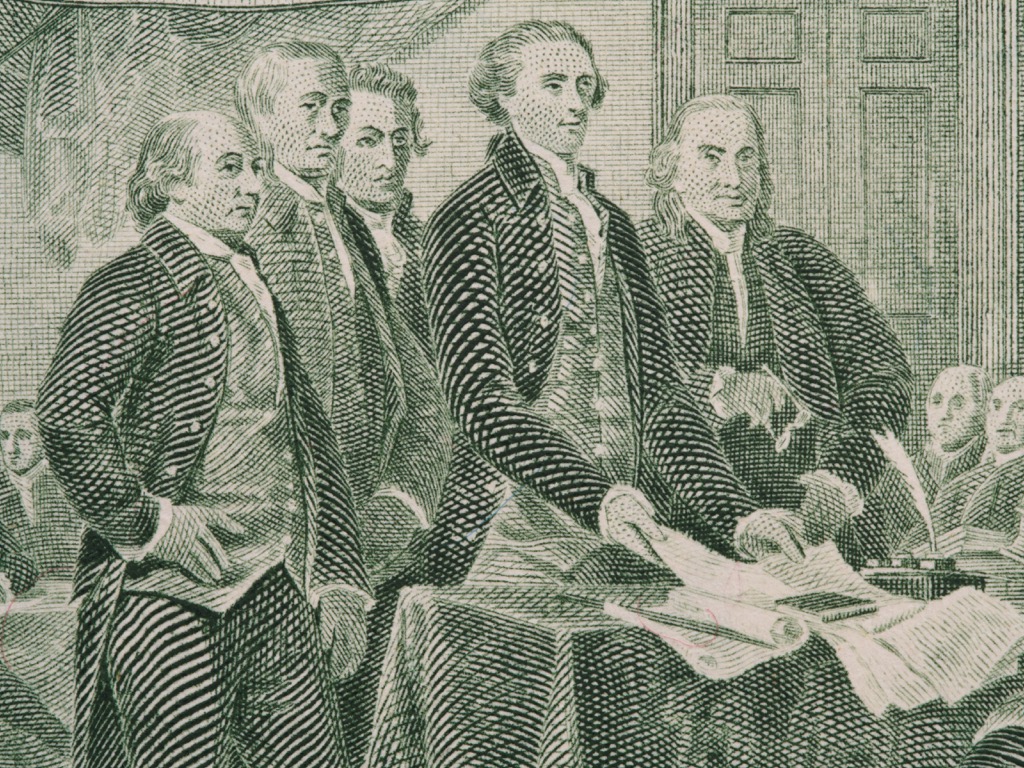
When talking about the founding of the United States, the word "God" has a habit of popping up. A popular belief was that the U.S. was founded as a Christian nation. While it's true that the colonies were originally established by those seeking to escape religious persecution, it's been made clear through recent books and historical reviews that the country's relationship with Christianity is far more complicated. These historians assert that if there was any overriding religious notion during the founding of the U.S., it was skepticism of organized religion and a belief that a country's citizens should be able to worship who they liked. And for more of history's more glaring falsehoods, check out the 28 Most Enduring Myths in American History.
16
Thomas Edison Invented the Lightbulb
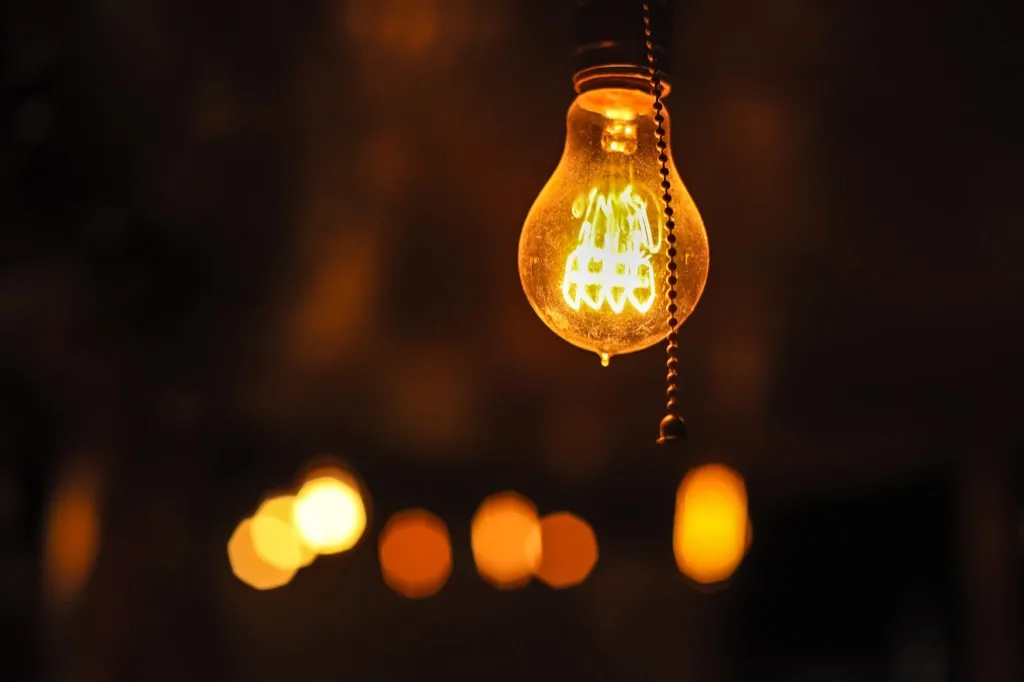
The great inventor Thomas Edison (with 1,093 patents to his name) was also a great self-promoter, and generally receives full credit for creating the lightbulb when he was far from the only person to develop this new technology. In fact, other inventors including Warren de la Rue, William Staite, and Joseph Swan developed their own versions of the bulb before Edison, and it's unlikely he could have struck on his revolutionary design without standing on their shoulders.
17
Your Tongue Had Different Areas for Different Tastes

We've all seen that map of the tongue: sweet up front, bitter in the back, sour and salty on the sides. Turns out, the whole thing is nonsense. It doesn't take scientists to prove that you'll taste salt on the tip of your tongue or sweet on the sides, yet this myth persisted for a good part of the 20th century. And for more about your body, here are 20 Amazing Facts you Never Knew About Your Body.
18
There Are Right-Brained and Left-Brained People

For years, we were enchanted by the idea that there were two types of people—the analytical, numbers-oriented left-brained folks, and the creative, wordsmiths who do most of their thinking with the right side of their brains. Though brain studies have found that there are patches of activity in certain parts (e.g. speech emanates from the left side of the brain for right-handed people), on average people use both sides of their brain equally. And for more on your body, This Is What One Cigarette a Day Does to It.
19
There Are Only Four Types of Taste
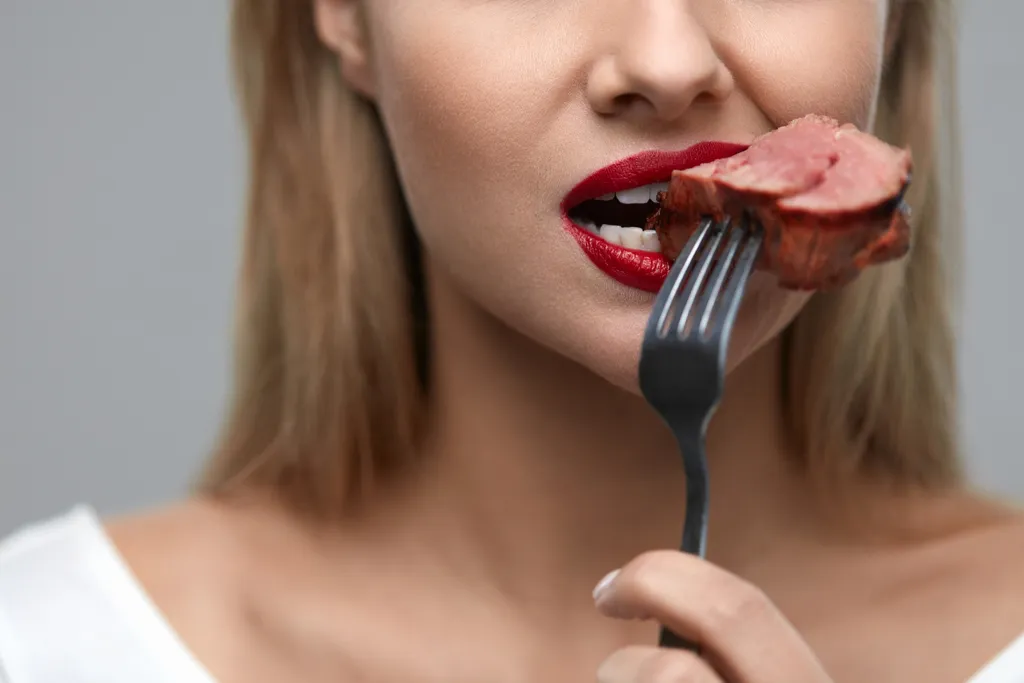
Sweet, salty, sour, and bitter were the four basic taste qualities we believed that people had. But in the past two decades, scientists made the case for the fifth category of taste, the elusive savory flavor that has come to be known as umami. It's now become such a conventional concept, in restaurants, cookbooks, and even fast food dishes, that it's hard to believe it was a fairly recent discovery.
20
We Have Only Five Senses

Just as we believed that we had only four types of taste, we've long held the view that there were just five senses. In fact, scientists have emphasized that we have at least a couple more. There's proprioception (sense of pain) and nociception (sense of space). And some researchers have identified a handful of other particular senses—sadly, none of which include seeing dead people.
21
Diamonds Are Made from Coal

The idea that crushing coal with enough power can produce a diamond is a compelling idea and makes for a nice metaphor about how hard work can create wonders. But sadly, it's not actually true.
While both diamonds and coal are forms of the element carbon, and pressure is key to creating both coal and diamonds, the two are not the same thing. They are two different forms of carbon. Coal originates as decaying plants and other life forms, which could not further be turned into diamonds. Diamonds are even found in meteorites from outer space, which coal is not. Oh, and speaking of diamonds: Here are the 20 Best Engagement Rings for Every Budget.
22
Blood Flows Blue Inside of You

We once believed that blood flowed blue inside of us and when exposed to oxygen, through a cut or wound, then shifted to the color red. In fact, while veins may look blue on the skin's surface, that relates more to how the light hits your eye than the actual color of the blood itself, which ranges from bright to dark red, but is never blue.
23
We Only Use 10 Percent of Our Brains

While it might be true that we don't use every part of our brains simultaneously at all times, researchers using brain-imaging technology have found that most regions of the organ are active throughout the day. Robynne Boyd explains in Scientific American:
"Take the simple act of pouring coffee in the morning: In walking toward the coffeepot, reaching for it, pouring the brew into the mug, even leaving extra room for cream, the occipital and parietal lobes, motor sensory and sensory motor cortices, basal ganglia, cerebellum and frontal lobes all activate. A lightning storm of neuronal activity occurs almost across the entire brain in the time span of a few seconds." To make sure your brain is working at full capacity, here are the 7 Ways to Boost Your Brainpower After 40.
24
You Can Train Your Body to Become Double Jointed

Being "double jointed"—which physicians officially call "hypermobility" or "joint laxity"—is actually something you are born with, not something you can learn. It used to be believed that this was something you could train your body to do through practice. In fact, while athletes and dancers may get more flexible over years of training, they will not truly be "hypermobile." So call your buddy from the 7th grade playground and tell him he's wrong! And for more amazing lessons, here are the 40 Ways Your Body Changes After 40.
25
America Singlehandedly Won World War II

We like to imagine that the U.S. rode in to Europe like the cavalry and almost single-handedly beat Hitler and won World War II. While that may make for some great movies, every reputable historian will tell you that the war was won thanks to contributions by the Russians, English, and plenty other nations, with the U.S. playing a crucial, but not the only role. In fact, Russia arguably played the more important role winning the war by holding down the Eastern Front—and lost far more soldiers than any other nation.
26
Tryptophan in Turkey Makes You Tired
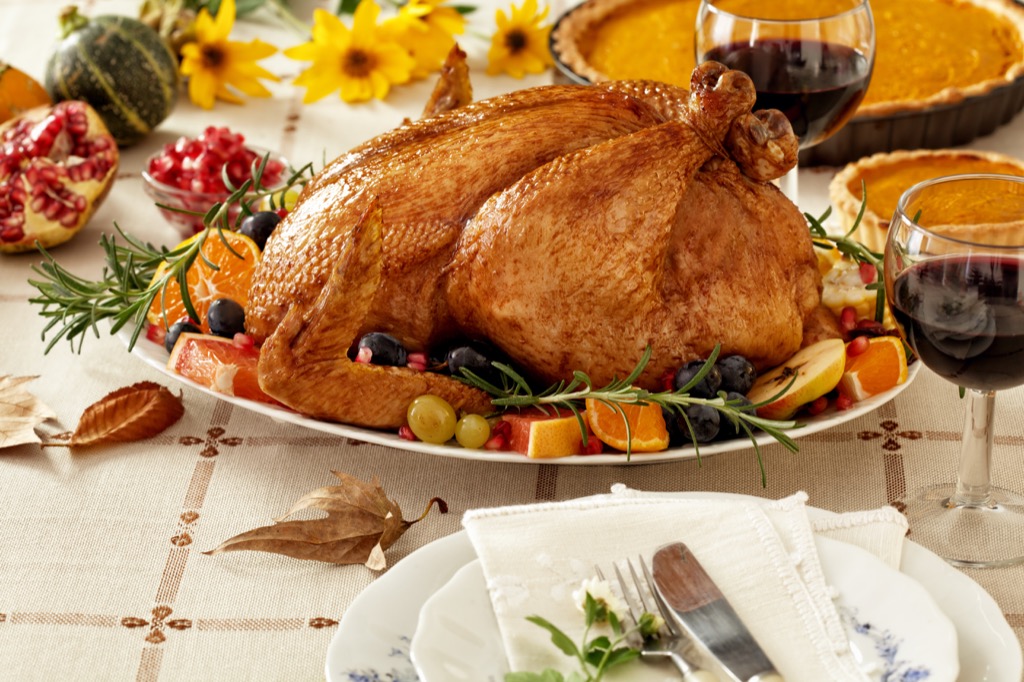
Every Thanksgiving, we hear about how we feel exhausted after the big meal because of the amino acid tryptophan contained in turkey. While the fowl gets the reputation for making you want to nap, this notion has been debunked by scientists who have noted that the bird contains no more tryptophan than many other meats, cheeses, and other foods. If you're tired, it's probably just because you ate too much.
27
You Lose Half Your Body Heat Through Your Head

We used to believe that our heads were the areas of our body where we lost most of our body heat. On a cold day, put on a hat and miraculously notice the difference. But in fact, scientists have found little evidence that your head releases more heat than average compared to other parts of your body exposed to the same cold conditions. It seems like more heat escapes through your head because that's usually the part that's not covered with clothing.
28
Crickets Don't Have Ears

Researchers recently discovered that crickets actually do have hearing organs—on their knees. They are three parts that together capture sound vibrations and send these to the brains of the crickets, grasshoppers, or katydids.
29
Bats Are Blind

Conventional wisdom is that "blind as a bat" isn't just an expression—that bats are in fact blind and use only sonar to guide their way and avoid obstacles. In fact, bats actually can see, at least in a limited way, and there are times when they are searching for food that the creatures don't use their natural sonar at all, solely their sight.
30
Urinating on Jellyfish Stings Neutralizes Them
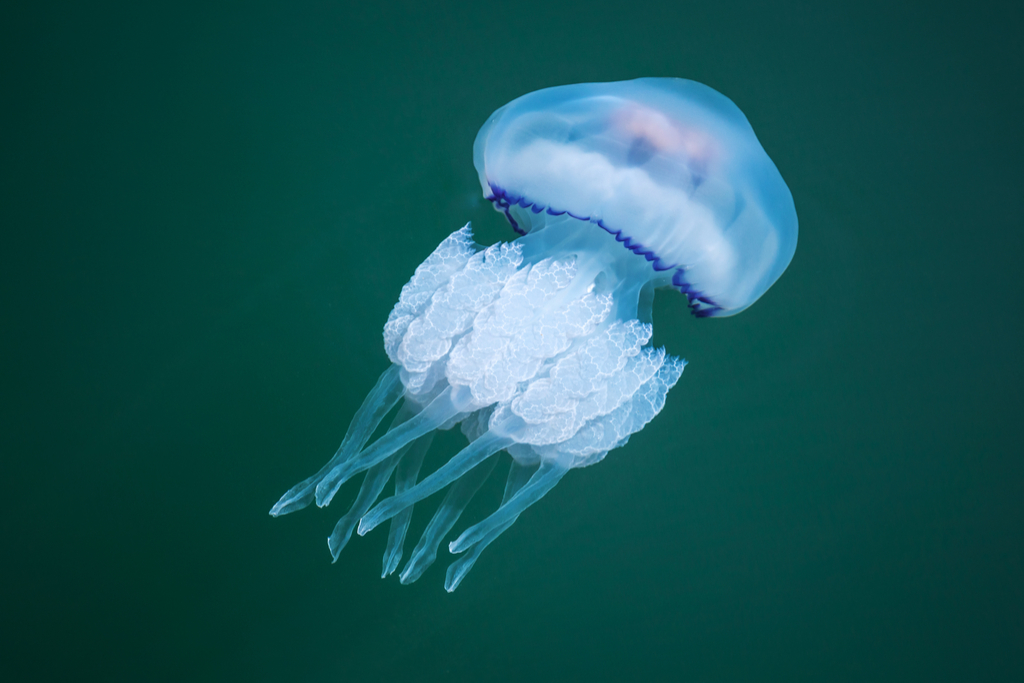
The advice has floated around for decades: If you are stung by a jellyfish, you can neutralize the pain by urinating on it. In fact, researchers have exposed this as totally bogus. Applying urine, or ammonia or alcohol, to a sting results in the opposite reaction, irritating the active cells and making the sting worse. Instead, they urge those stung by a nasty jelly to use household vinegar.
31
Camels Hold Water in Their Humps

Whether from Looney Toons cartoons or teachers who should know better, we came to the common misconception that camels store water in their humps. In fact, the hump is just a mound of fat. That being said, these desert-roaming creatures are able to go without drinking water for a week or more, but because of their red blood cells and organs that retain water effectively, not because they're carrying a canteen.
32
Ostriches Bury Their Heads in the Sand

Another popular image from the animal kingdom that's not actually real. When these giant birds get scared, they actually lay on the ground and stay still, getting their neck as flat to the ground as possible, which can look from a distance as if it's buried. But that being said, these creatures are not cowards—they've been known to come out hard against predators with their clawed foots when they or their eggs are threatened. And for more stories from the animal kingdom, here are 20 Animals That Are Tragically Near Extinction.
33
Absinthe Causes Hallucinations
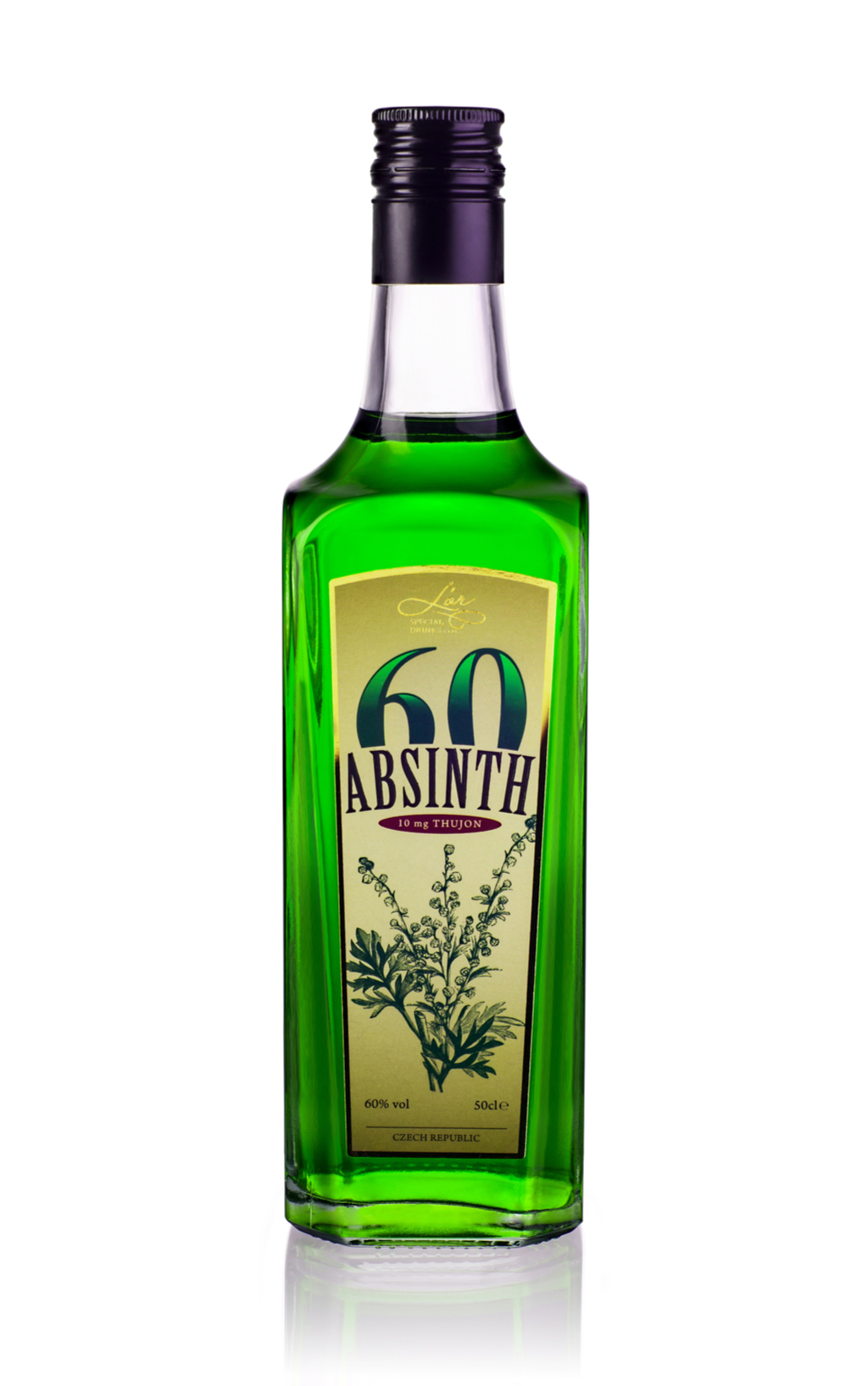
This wasn't even true in the 19th century, when drinking "the green fairy" was all the rage in European nightclubs. It was banned in the 20th century in the U.S. and many other countries out of fears that it could cause hallucinations and even death in its drinkers, but this was not based on actual research than a need for a convenient scapegoat from the temperance movement and French wine industry.
34
The "Hair of the Dog" Helps Overcome a Hangover

The idea that the "hair of the dog that bit you" can help you to overcome a hangover—drinking a Bloody Mary or Greyhound to get over that morning-after headache—may be a compelling idea, especially if you're a big-time boozer. But those who have looked into it recently have found little evidence that it works. The only thing that seems to really help a hangover is a healthy amount of water.
35
Ernest Hemingway Boozed it up While He Wrote

This author is well known for his drinking prowess and had for much of the last century been believed to drink like a fish while he wrote his work. But while the man loved to get soused, recent research into his life has found that he did not make a practice of tippling while he typed. One biographer notes that when asked if it was true that he took a pitcher of martinis to work each morning, he replied, "Jeezus! Have you ever heard of anyone who drank while he worked? You're thinking of Faulkner."
36
An Apple Falling on Isaac Newton's Head Led to the Idea of Gravity
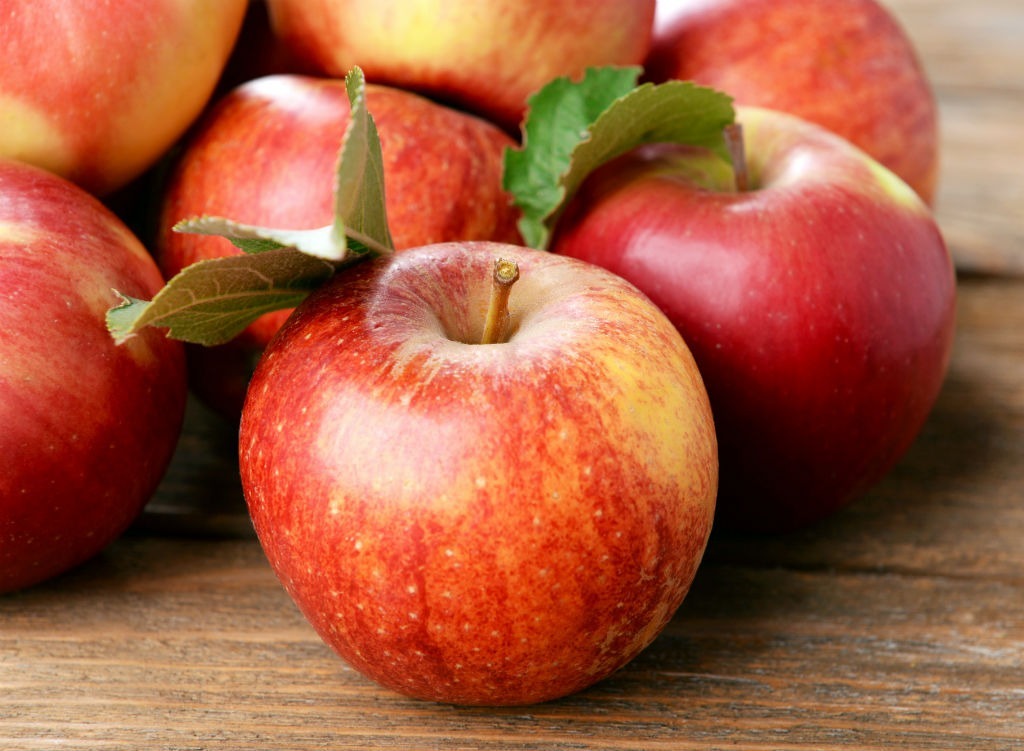
It's a simple story of science in action that we learn in elementary school: A young Isaac Newton relaxes under a tree when an idea hits him in the form of an apple falling from the tree: gravity! In fact, manuscripts in the London Royal Society's archives have found that the story is partly true—it just didn't involve the fruit hitting him on the head. His biographer during his life, William Stukeley, wrote:
"After dinner, the weather being warm, we went into the garden and drank tea, under the shade of some apple trees…he told me, he was just in the same situation, as when formerly, the notion of gravitation came into his mind. It was occasion'd by the fall of an apple, as he sat in contemplative mood. Why should that apple always descend perpendicularly to the ground, thought he to himself…"
37
Richard III Looked Nothing Like his Shakespeare Character

Richard III is one of William Shakespeare's greatest villains, and physically memorable as having a hunchback "rudely stamp'd" and "deformed, unfinish'd," who cannot "strut before a wanton ambling nymph." But it was widely assumed that the Bard had taken liberties in describing the actual man—exaggerating his physical deformities for dramatic effect. But when the actual king's bones were uncovered in 2012, it was learned that he did have a substantial hunchback just as Shakespeare described.
38
Lighting Never Strikes the Same Place Twice

Turns out that lighting can strike the same places dozens of times. Just to give one example, on June 30, 2014, during a huge lighting storm in Chicago, the Willis Tower was struck 10 times, Trump Tower took eight hits, and John Hancock Center had four strikes. In one year, the Willis Tower is estimated to be hit by lightning as many as 100 times.
39
Mount Everest is the Tallest Mountain in the World

All right, this one involves some semantics, but while Everest is the highest mountain in the world, Hawaii's Mauna Kea Volcano is technically the tallest—measuring 33,476 feet from its base to its top (Everest is only 29,035 feet). We don't hear as much about Mauna Kea, however, because most of it is underwater, with just 13,796 feet rising above sea level.
40
Football is 100 percent safe

This is one of the biggest myths to be exploded in the past few years. While football is as American and beloved as apple pie, the mounting evidence and heartbreaking stories about the damage it can cause to players' brains has made it hard for even the NFL to pretend the jury is still out on the dangers this sport involves.
To discover more amazing secrets about living your best life, click here to sign up for our FREE daily newsletter!





















